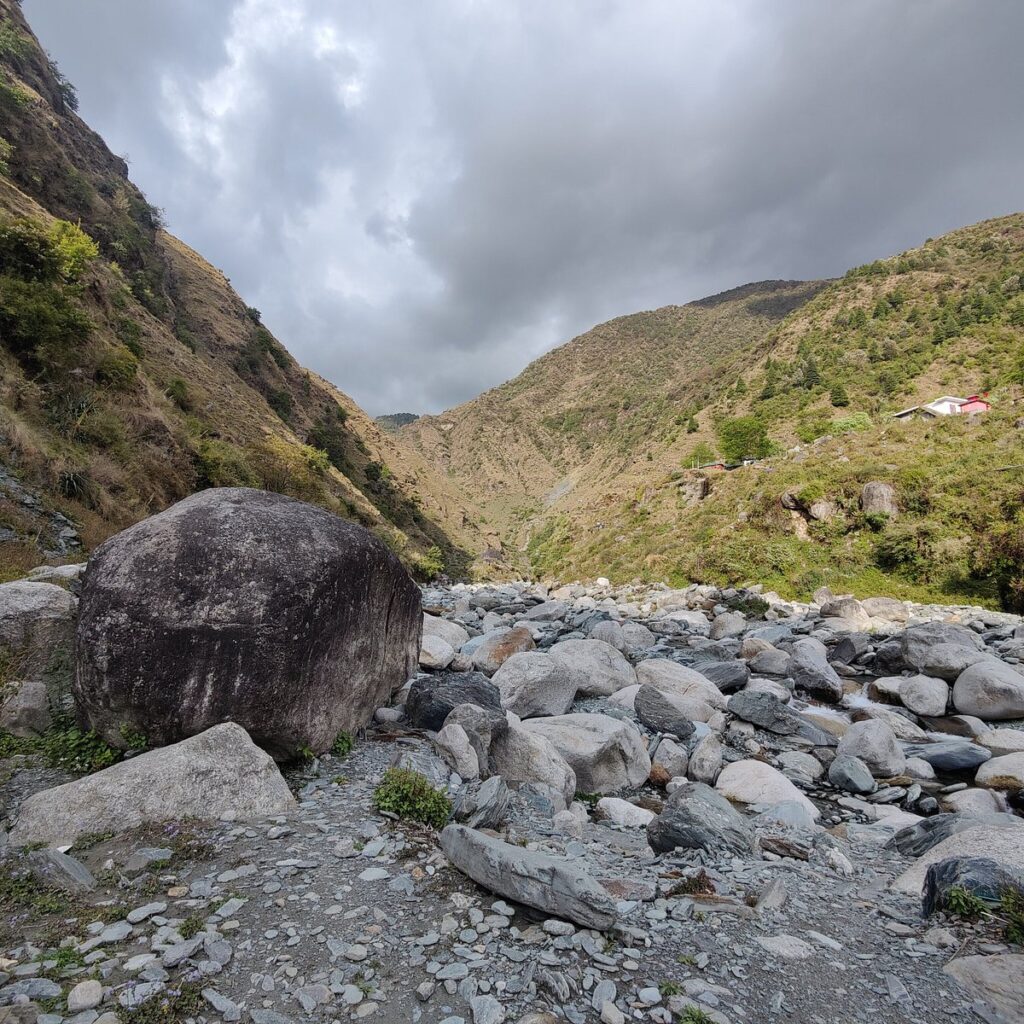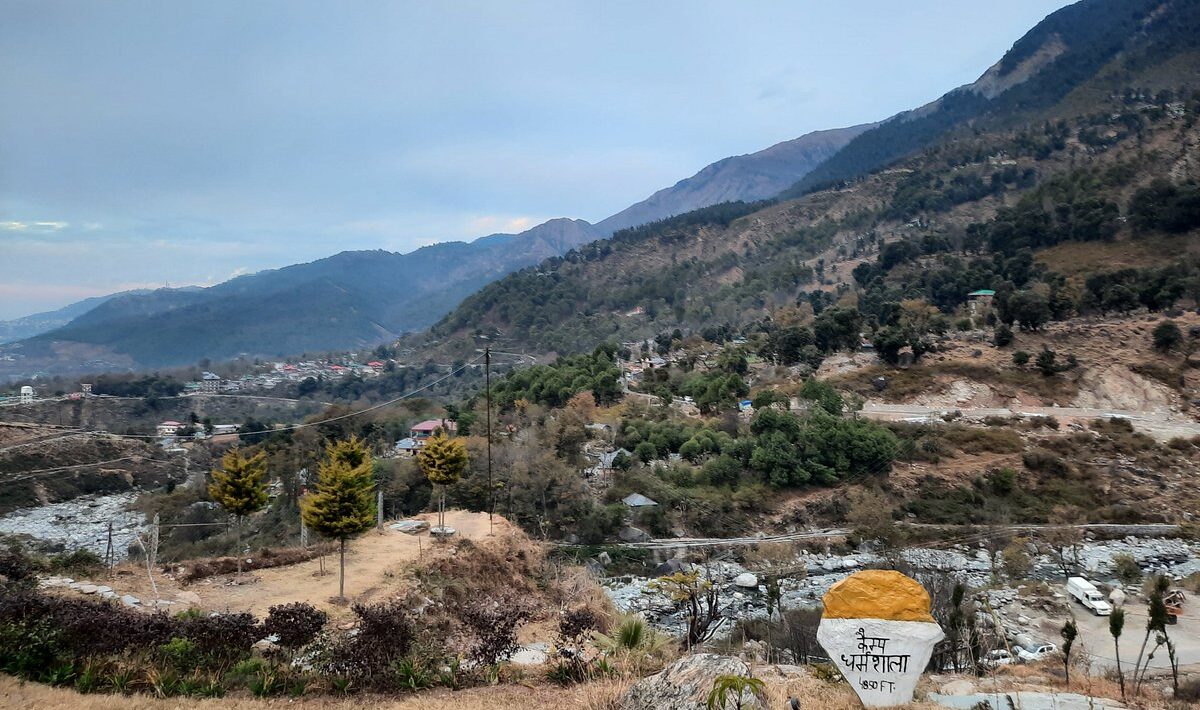Nestled in the verdant foothills of Himachal Pradesh, Kharota is a serene mountain village that offers a peaceful escape from bustling city life. Though often overshadowed by Dharamsala and McLeod Ganj, Kharota is gradually gaining recognition as an offbeat destination for travelers seeking Himalayan vistas, cultural authenticity, and quiet retreat.
In this guide, we’ll cover where Kharota is, how to get there, what to see and do, local life and culture, travel tips, and more — all structured to help your blog rank for “Kharota travel,” “Kharota village Himachal,” and related search terms.

Where Is Kharota?
Kharota is a village in Dharamsala tehsil, within the Kangra district of Himachal Pradesh. It lies around 10 km from Dharamsala town, making it accessible yet still tucked away from main tourist circuits.
According to the 2011 Census:
- Population: ~ 702 (353 males, 349 females)
- Literacy: ~ 81.05% overall (male literacy ~ 85.55%, female literacy ~ 76.50%)
- Houses: ~ 150
- Languages: Hindi and local dialects
Because of its proximity to Dharamsala and McLeod Ganj, Kharota is often used as a quiet base for exploring the Dhauladhar foothills and nearby spiritual and nature destinations.
Why Kharota Should Be on Your Himachal Itinerary
1. Peaceful, Scenic Charm
Far from the tourist crowds, Kharota gives you space to breathe — with forested paths, terraced fields, misty mornings, and mountain views.
2. Local Culture & Authentic Experience
By staying in Kharota, you can engage more directly with Himalayan village life: local food, stories from hosts, walking through everyday agricultural routines, and observing traditional architecture.
3. Proximity to Major Attractions
Kharota is close enough to Dharamsala to combine exploration of key sites such as:
- Dalai Lama Temple Complex
- Norbulingka Institute
- Triund Trek
- Gyuto Monastery
- Tibetan Museum
You can enjoy both quiet village life and access to more popular sites.
4. Trekking & Nature Adventures
The region around Kharota is a great launching pad for day hikes, forest walks, and moderate treks. For guided treks in this region, you can check out Dharamsala Treks — they specialize in Himalayan treks and hikes in the Dhauladhar and Kangra valleys. Dharamsala Treks and Tours
5. Affordable & Comfortable Stays
Kharota offers a variety of homestays, guesthouses, and modest lodging options. Staying here is often less expensive than in more touristy towns, with the bonus of a more tranquil environment.
What to See & Do Around Kharota
● Nature Walks & Trails
Explore forested routes, small rivulets, and pathways across terraced fields. The surroundings evolve with each season — fresh greens, golden hues, or snow-capped panoramas — making every walk unique.
● Viewpoints & Hill Lookouts
Small hillpoints around Kharota, such as “Kharota Hill View Point,” offer sweeping views of the valley and the Dhauladhar range.
● Gyuto Monastery
A spiritual landmark nearby, Gyuto Monastery is known for its tantric Buddhist traditions and peaceful setting. It’s often cited in travel blogs about the region.
● Dharamsala & McLeod Ganj Day Trips
Since Kharota is only ~10 km from Dharamsala, plan visits to:
- The Dalai Lama Temple Complex
- Bhagsu Waterfall & Bhagsunath Temple
- St John’s Church
- The Tibetan Museum
- Trekking trails around McLeod Ganj
● Local Village Exploration
Stroll through nearby hamlets, chat with farmers, observe traditional homes, or even take part in local chores (if invited). Some homestay hosts may offer cooking demonstrations or stories about local life.
● Meditation & Yoga
Given the spiritual atmosphere of the Dharamsala region, Kharota’s serene surroundings are ideal for quiet reflection, yoga, or simple meditation retreats.
Best Time to Visit Kharota
| Season | Highlights | Things to Keep in Mind |
|---|---|---|
| Spring (April – June) | Pleasant temperatures, blooming flora, clear skies | Ideal for most outdoor activities |
| Monsoon (July – September) | Lush scenery, occasional rains | Roads may be slippery, landslides possible |
| Autumn (October – November) | Crisp air, clear views, fewer crowds | Beautiful scenery, great for photography |
| Winter (December – February) | Chill, occasional snow in higher elevations | Some trails or roads may be inaccessible |
For most travelers, April to June and October to November tend to offer the best balance of pleasant weather and accessibility.
How to Reach Kharota
By Air
The nearest major airport is Gaggal Airport (Kangra District Airport). From there, you can hire a taxi or take road transport to Dharamsala, then onward to Kharota.
By Train
The nearest railway stations are in the foothills, often more than 10 km away from the village. Commonly, people travel via stations like Pathankot, then proceed by road.
By Road / Bus
Buses (public and private) connect Dharamsala and other regional towns. From Dharamsala, hiring a local taxi or vehicle is the easiest way to reach Kharota. The final stretch may be along narrower or hilly roads, so a sturdy vehicle is helpful.
Once in Kharota, much of your movement will be by foot, given the terrain.
Accommodation Options in Kharota
Homestays & Guesthouses
These are the most common options in Kharota. Many locals open up rooms for travelers — amenities vary (hot water, heating, WiFi, meals). Staying in a local home offers deeper interaction and a more immersive experience.
Boutique / Nearby Resorts
While fewer in number inside Kharota itself, nearby resorts in the broader Dharamsala region can offer more luxurious comfort while still allowing access to Kharota’s peace.
Booking Tips
- Check road accessibility to the property
- Ensure availability of hot water, heating, WiFi
- Ask whether meals are included or if there’s a kitchen nearby
- Look for rooms with a view, balcony, or terrace
Culture & Life in Kharota
- Language & Literacy: Hindi and local dialects. Literacy is relatively high (~81%), with female literacy ~ 76.5%.
- Livelihood: Many residents engage in agriculture, horticulture, and rural trades.
- Festivals & Traditions: Local Himachali festivals and temple rituals are part of the cultural fabric. If your visit aligns, you may witness fairs or religious events.
- Cuisine: Simple, fresh local food — seasonal vegetables, pulses, Himalayan staples. Homestays often serve home-cooked meals.
- Hospitality: Visitors often mention warm, welcoming hosts, eager to share local stories and assist with travel plans.
Tips & Things to Keep in Mind
- Comfortable Footwear: Paths may be steep or uneven.
- Layered Clothing: Weather can change; carry rain gear, warm clothes, and sun protection.
- Connectivity: Mobile signal/WiFi may be patchy in remote zones.
- Carry Cash: Small shops and homestays might not accept cards.
- Respect Local Customs: Dress modestly, ask before photographing people, remove shoes in homes.
- Start Early: For walks or hikes, begin early to avoid afternoon showers or fog.
- Eco-sensitive Travel: Minimize plastic use, dispose of waste responsibly, respect the environment.
- Check Road Conditions: Especially in monsoon or winter, landslides or snow may block roads.
- Stay Flexible: Local transport timings can change; allow buffer time.
- Guided Treks: For more ambitious walks, especially in the Dhauladhar or remote passes, consider booking with a trusted local operator like Dharamsala Treks. Dharamsala Treks and Tours
Sample 3-Day Itinerary Including Kharota & Treks
| Day | Activities |
|---|---|
| Day 1 | Arrive at Dharamsala → transfer to Kharota → settle in at your homestay → short evening stroll around the village |
| Day 2 | Morning moderate trek or nature walk → visit Gyuto Monastery in the afternoon → evening trip to McLeod Ganj for the Dalai Lama Temple, local markets |
| Day 3 | Guided trekking adventure (e.g. via Dharamsala Treks) into nearby passes or valleys → return to Kharota or onward travel |
You can extend this itinerary by exploring Palampur, Kangra Fort, or going deeper into the Dhauladhar ranges.
Link & Resources
For guided treks and hiking experiences in this region, visit Dharamsala Treks — they specialize in Himalayan trekking and day hikes across the Dhauladhar and Kangra Valleys. Dharamsala Treks and Tours
- Dharamsala Treks — Official Website: dharamsalatreks.com
- Their offerings include treks like Triund, Indrahar Pass, Kareri Lake, hidden valleys, and more.








